I guess it goes without saying that one of the great things about living here instead of just visiting is that I’ve seen so many aspects of Taipei that I hadn’t realized existed. For example, not long after we arrived, my uncle took us to Huashan 1914, a converted wine factory in the heart of Taipei that now houses galleries and shops displaying the works of local artists and designers.
I think my thing for old industrial buildings started when I had a job in college that required me to tour a bunch of 19th-century red-brick textile factory buildings. After seeing the interiors of those buildings (which were actually still being used for manufacturing), I started fantasizing about living in the newly converted factory near campus that I’d never paid any attention to before (this was back in the 90s, when loft living was still a rare thing in places like Providence, Rhode Island.)
I know that repurposed industrial spaces are a dime a dozen in places like NYC and London, and they even have a significant presence in small U.S. cities like Louisville, but somehow my preconception about Taiwan had been that those kinds of spaces wouldn’t exist here. I guess my Western bias was that Taiwanese people wouldn’t be into that kind of thing, since it seemed like pretty much all of the buildings in Taipei had been built since the 1950s and looked like these: or these:
With most of the picturesque little traditional houses like these having been torn down to make way for the above, I figured there was no way that any obsolete industrial spaces would have been preserved.
.
.
So Huashan was a bit of a revelation:
Inside one of the restaurants within the complex:
These bar stools in front of the restaurant are takes on the typical short plastic stools used at Taiwanese street food stalls:
A teahouse across from the restaurant:
The backstory of this place is that it was built by the Japanese in 1914 when they ruled the country (1895-1945). Not sure when the factory ceased operations, but it had been completely abandoned for almost a decade by the time a thespian group came across it in 1997 and started using the space for its own productions. Artists began taking notice and started setting up studios, while other performance groups also staged events in the space. In 1999, an NGO took over the management of the property, and restoration officially began in 2005. Now the space hosts a variety of exhibits, film festivals, and cultural events, as well as serving as the permanent home of a few small eateries and shops.
The day after we first went to Huashan, we decided to check out an international design expo that was taking place in Taipei. Little did we know that we’d be going to our second repurposed industrial building in two days, this one having formerly been a tobacco factory. (Wonder if it’s at all significant that the two preserved factories we’ve found in central Taipei produced alcohol and tobacco products.)
The expo was so crowded that we didn’t get to see much of it, and even when Serge and I came back on a weekday, it was still mobbed. Another thing I hadn’t expected: that a design expo in Taiwan would be so incredibly popular.
A couple of months later, Asha and I came back on a weekday to meet up with some friends and check out a dinosaur exhibit. This time, we got to get a much better look at the space:
Songshan Tobacco Factory was built in 1937, also by the Japanese. It remained in operation until 1998, and in 2001 it was declared a municipal historic site. Besides hosting events as diverse as design expos and dinosaur exhibits, it’s the permanent home of the Taiwan Design Museum. It appears to have a lot more raw space with no permanent use than does Huashan, and it is surrounded by a lot of vacant land and construction sites. Probably due to my lack of Chinese literacy, I haven’t been able to figure out what exactly is going to be arising on the surrounding land, but it seems that there were originally plans for a large commercial complex including an indoor stadium, a hotel, a shopping center, and office buildings, but there are also more recent reports of a different developer coming in and building a more culturally-oriented commercial development that will include a theater. Both plans, however, seem to include hotel, office, and retail space, and I wonder how much of the current feel of the place will remain once all the new development takes over. Meanwhile, protesters have been calling for preserving the remaining green space around the factory as a public park or at least scaling down the scope of the proposed development. I’m guessing those protests won’t have much impact, though.
Anyway, to those of you who know Taipei better than I do: are there any other repurposed industrial spaces I should check out?

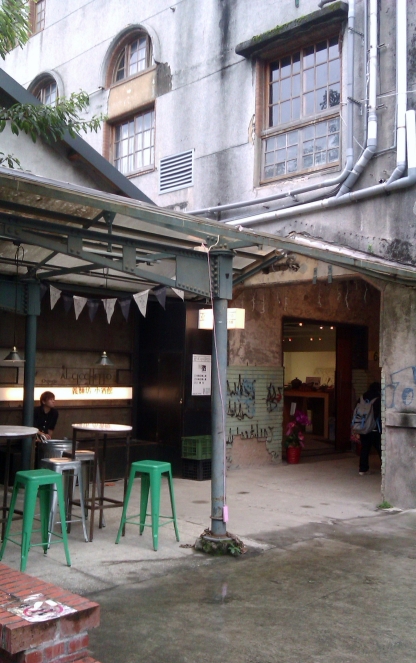
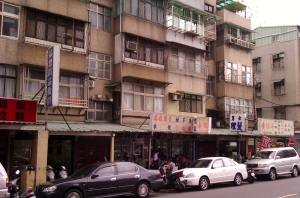
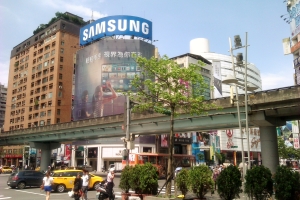
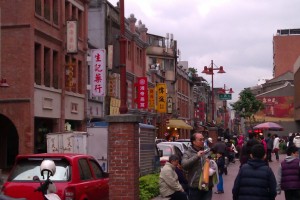
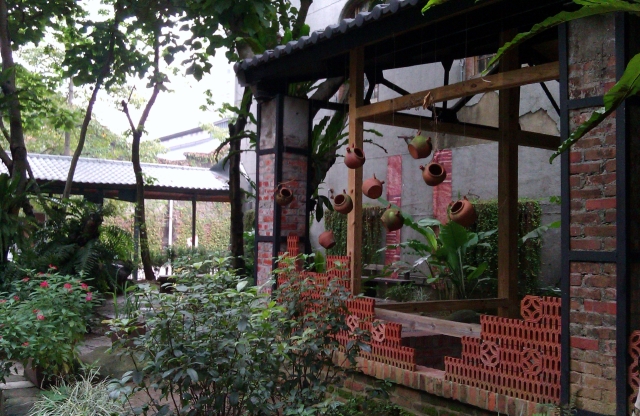
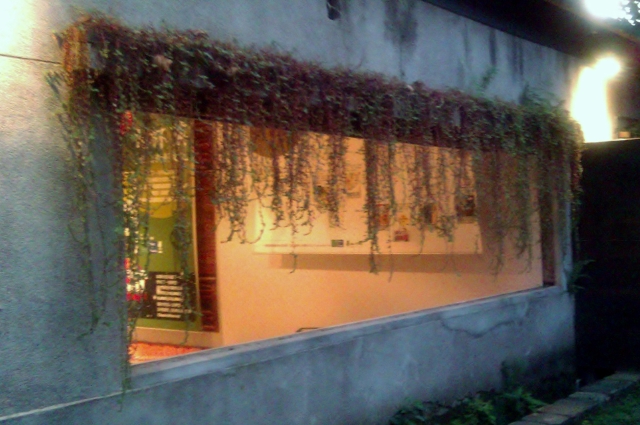
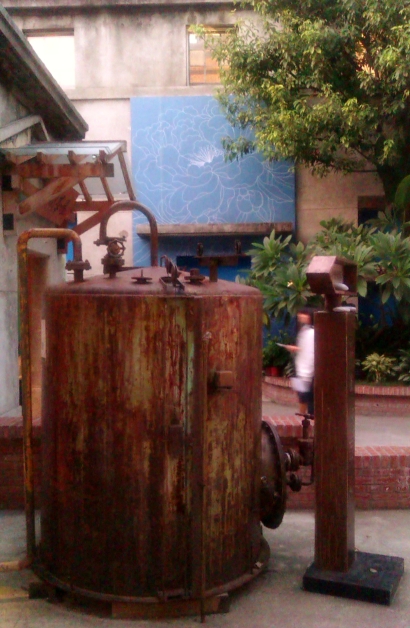
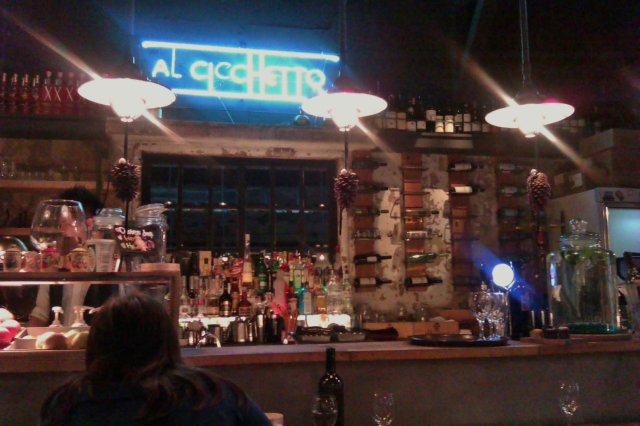
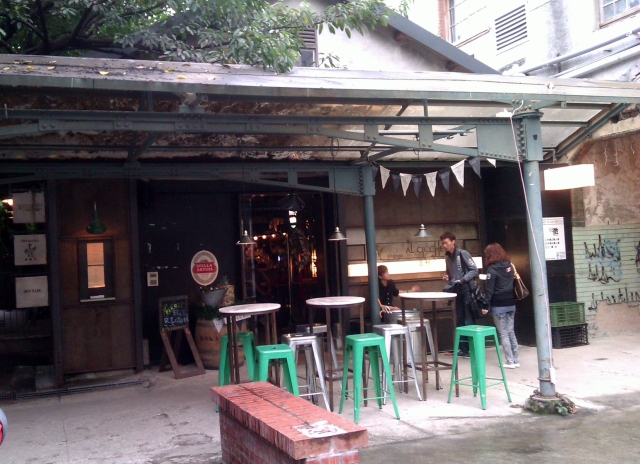
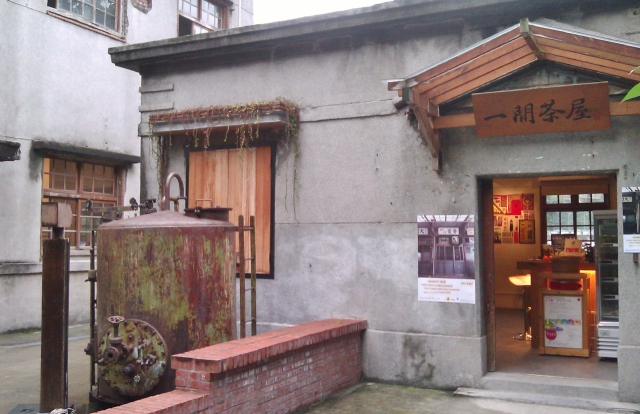
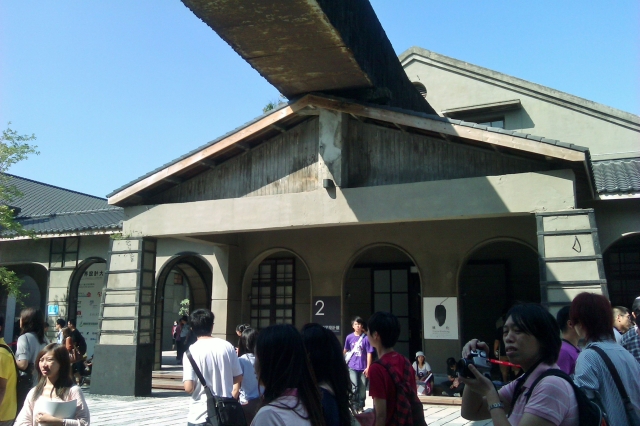
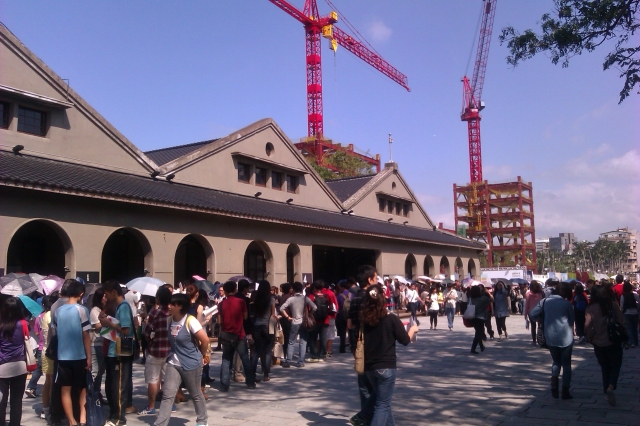
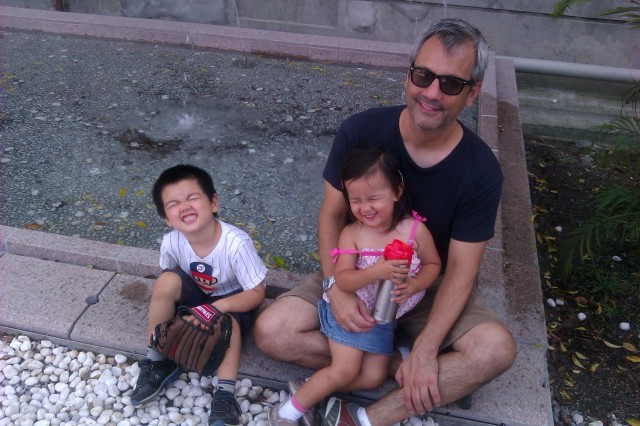
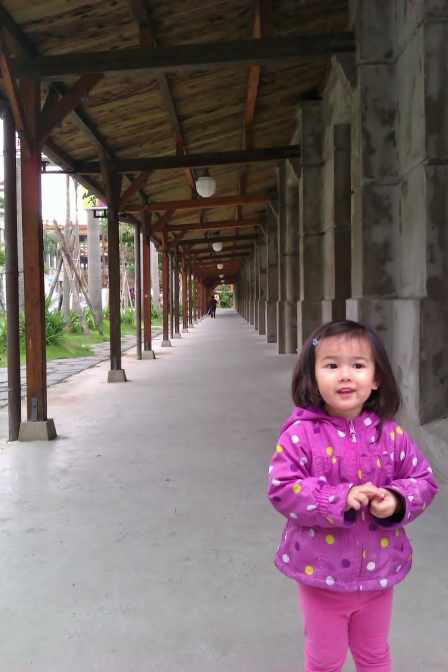
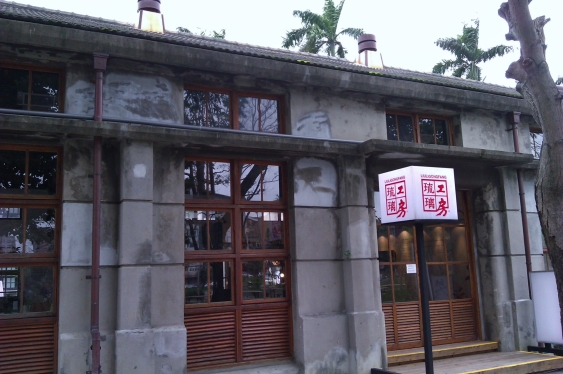
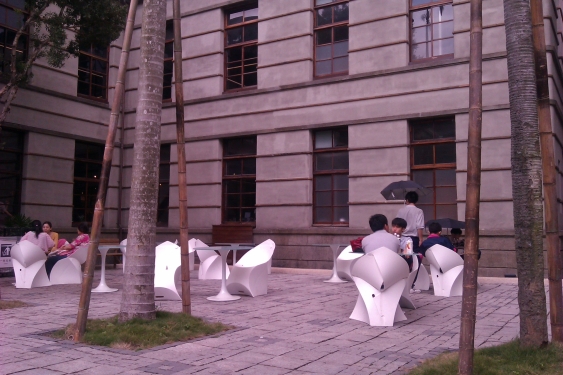
I wonder if artists and creative types influence each other worldwide? Or is the nature of working in the arts everywhere that they are always in need of overlooked areas of the city to colonize? (Then they make it hip and businesses move in, then the rents go up and the artists move on to another place while the businesses try to maintain the artsy vibe)
Hi Denise, thanks for commenting! Good points on both counts. And I’ve seen at least one lower-income neighborhood in Taipei that seems to be in the midst of that first artist-led wave of gentrification. I think what I was most surprised about was the fact that the government and/or some real estate conglomerate didn’t tear down these factories before they became hip, since so much of that era’s architecture has been torn down, and the land would have been far more profitable if it had high-rises on it. By the time these two factories ceased operations, the neighborhoods surrounding them were already very desirable from a real-estate standpoint. However, by that time (the 1990s) maybe it was late enough that attitudes towards older buildings had moved away from the tear-down approach, and influences including those from abroad included the idea that these spaces might have wider boho-chic commercial appeal. But really, I have no idea what I’m talking about.
Also, somehow your comments made me think about the fact that, despite seeing some similarities between these factory conversions and those popular in the U.S., loft apartments have not at all been a part of the Huashan and Songshan factory conversions, so maybe that sort of thing doesn’t have as much appeal to Taiwanese people.
Pingback: Biking and hiking around Fulong | Life on the other side